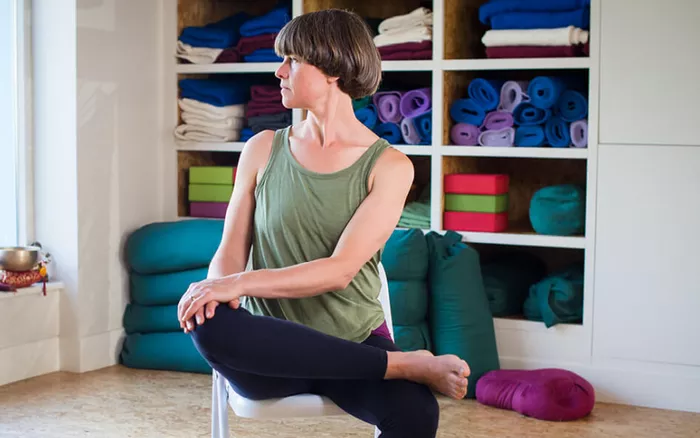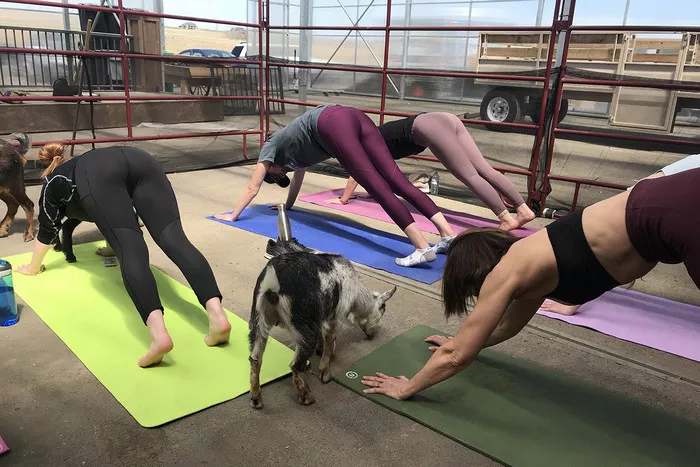Restorative yoga, with its focus on relaxation and healing, has gained popularity among individuals seeking to alleviate stress, enhance well-being, and improve overall health. This gentle practice allows practitioners to unwind and recharge, making it essential to understand how often one should engage in restorative yoga to maximize its benefits. This comprehensive guide delves into the frequency of restorative yoga practice, its benefits, and practical tips to create a sustainable routine.
Understanding Restorative Yoga
What is Restorative Yoga?
Restorative yoga is a slow-paced, therapeutic style of yoga designed to facilitate deep relaxation. It typically involves holding poses for longer durations, supported by props like blankets, bolsters, and blocks, which help to ease tension in the body. The primary goal of restorative yoga is to activate the parasympathetic nervous system, promoting a state of rest and recovery.
Benefits of Restorative Yoga
Stress Reduction: Restorative yoga helps lower cortisol levels, reducing stress and anxiety.
Enhanced Flexibility: Gentle stretching improves flexibility without causing strain.
Improved Sleep Quality: Regular practice can lead to better sleep patterns and overall sleep quality.
Emotional Balance: It promotes emotional well-being and aids in processing feelings, fostering a sense of calm and clarity.
Support for Recovery: Restorative yoga can be beneficial for recovery from injuries or chronic conditions by promoting healing and relaxation.
Factors Influencing Frequency of Practice
1. Individual Needs and Goals
The frequency of restorative yoga practice should align with individual goals and needs. For those seeking relaxation and stress relief, practicing 2-3 times a week may suffice. However, individuals recovering from trauma or chronic stress may benefit from more frequent sessions.
2. Time Availability
Consideration of one’s schedule is crucial. Practicing restorative yoga requires time for preparation, practice, and reflection. Individuals with busy lifestyles may opt for shorter, more frequent sessions rather than longer practices once a week.
3. Physical Health and Limitations
Individuals with certain health conditions or physical limitations should consult with healthcare professionals to determine the appropriate frequency. Beginners may start with one session per week and gradually increase as comfort and confidence grow.
4. Mental and Emotional State
Emotional well-being can dictate the frequency of practice. Those experiencing heightened stress or emotional turmoil may find more frequent practice beneficial. Conversely, individuals in a stable emotional state might practice less often.
See also: Restorative Yoga for Seniors: To Healing and Well-Being
Recommended Frequency for Restorative Yoga Practice
Beginners: 1-2 Times a Week
For those new to yoga or restorative practices, starting with one to two sessions per week allows the body to adapt. This frequency helps to establish a foundation for relaxation and stress relief without overwhelming the practitioner.
Intermediate Practitioners: 2-3 Times a Week
As practitioners become more comfortable with restorative poses, increasing the frequency to two to three times a week can deepen relaxation and enhance the benefits. This routine fosters a sense of calm and allows individuals to integrate restorative practices into their lifestyle.
Advanced Practitioners: 3-5 Times a Week
For seasoned practitioners or those seeking intensive stress relief or recovery, practicing restorative yoga three to five times a week can significantly enhance physical and mental well-being. This frequency encourages profound relaxation, emotional processing, and physical healing.
Daily Practice: When to Consider
While daily restorative yoga practice is not necessary for everyone, some may find that a short session (15-30 minutes) each day significantly improves their quality of life. This approach can be particularly beneficial during periods of high stress or when recovering from illness or injury.
Designing a Restorative Yoga Routine
Creating a Balanced Schedule
Incorporate Variety: Mix restorative yoga with other yoga styles or physical activities to create a well-rounded routine. This approach helps prevent burnout and maintains enthusiasm.
Listen to Your Body: Pay attention to how your body responds to each session. Adjust the frequency based on how you feel physically and emotionally.
Set Realistic Goals: Establish achievable goals for your practice, whether focusing on relaxation, recovery, or stress reduction.
Sample Weekly Schedule
Monday: Restorative Yoga (60 minutes)
Wednesday: Gentle Yoga (45 minutes)
Friday: Restorative Yoga (60 minutes)
Sunday: Restorative Yoga (30 minutes)
This balanced approach allows for adequate rest and variation, preventing monotony and enhancing overall well-being.
Incorporating Restorative Yoga into Daily Life
Short Practices
Even on busy days, incorporating short restorative practices can be beneficial. Consider setting aside 10-15 minutes for gentle stretching or mindfulness breathing to recharge during the day.
Mindfulness and Awareness
Practicing mindfulness in daily activities can enhance the benefits of restorative yoga. Focus on breath awareness and relaxation techniques during routine tasks, such as walking or waiting in line.
Joining a Class or Community
Participating in a restorative yoga class can provide structure and motivation. Being part of a community fosters accountability and support, encouraging regular practice.
The Psychological Benefits of Regular Practice
Stress Management
Consistent restorative yoga practice equips individuals with tools to manage stress more effectively. The calming effects of yoga can transform one’s approach to challenging situations, promoting resilience.
Enhanced Emotional Well-Being
Regular practice encourages emotional processing and regulation. It allows individuals to confront and release pent-up emotions, leading to greater emotional stability and clarity.
Improved Self-Awareness
Engaging in restorative yoga fosters a deeper connection to one’s body and mind. This heightened self-awareness can lead to healthier lifestyle choices and improved overall well-being.
Addressing Common Concerns
1. Time Constraints
Many individuals struggle to find time for yoga. Prioritizing self-care and setting aside dedicated time for restorative practices can enhance overall health and happiness.
2. Fear of Not Practicing Enough
It’s common to feel guilty about not practicing regularly. Remember that any time spent practicing restorative yoga is beneficial. Focus on quality rather than quantity.
3. Feeling Restless or Bored
If restlessness or boredom arises, explore new poses, breathing techniques, or mindfulness practices. Variety can reignite enthusiasm and deepen engagement.
Conclusion
Embracing a Restorative Practice
Finding the right frequency for restorative yoga practice is essential for maximizing its benefits. By understanding individual needs, physical health, and emotional state, practitioners can create a sustainable and rewarding routine.
The Journey to Wellness
Restorative yoga is a powerful tool for enhancing relaxation, emotional well-being, and physical health. Whether practiced once a week or daily, the key is consistency and mindfulness. Embrace the journey, listen to your body, and cultivate a restorative yoga practice that nourishes your mind, body, and spirit.
Final Thoughts
Incorporating restorative yoga into your lifestyle can profoundly impact your health and well-being. By establishing a regular practice that aligns with your goals and needs, you can unlock the transformative power of restorative yoga and experience lasting benefits.
You Might Be Interested In
Restorative Yoga Postures Without Props: A Comprehensive Guide
Restorative Yoga for Beginners: Relaxation and Healing
Warm Restorative Yoga: A Guide to Deep Relaxation and Healing
















